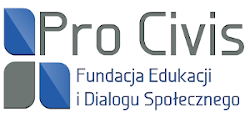TKP – Transferable / Tradable Knowledge Packages
Tadeusz Pęczek – Foundation Pro Civis
Knowledge has been traded / exchanged / transferred between humans since the beginning of Homo sapiens. In the early days, it was an exchange of one and not very complex package of knowledge, for another package of knowledge, as a simple exchange of goods, services or skills. Such an example of an exchange was an axe made of silicon or a silicon arrow blade or even an entire arrow with a silicon blade, for a hunted animal or part of such an animal, i.e. a solid portion of meat, the relatively easy acquisition of which was another man’s package of knowledge and skills.
In view of the fact that each person has different knowledge resources, different skills, talents and even trained habits, this is reason enough to share our knowledge resources with other people. Those people who had a very large stock of knowledge and skills, and in areas where their fellows particularly needed them, became more abundant and were at the top of the tribal or ancestral hierarchy. If we add to this unparalleled skills in selling/exchanging these resources, combined with qualities in people management or even leadership, we are already talking about leaders of ancestral clans, tribes or even states, and in the worst case, chief advisors to these leaders.
A knowledge economy or knowledge-based economy is an economic system in which the production of technical goods as well as services is based on the intensive use of knowledge[1] to ensure rapid progress in technical, technological, product or service innovation[2], as well as the accelerated disappearance / elimination of older solutions from the market[3].
The modern knowledge economy differs from the primary economy only and until, in terms of resources, availability and intensity of use of knowledge and economic awareness of its market value in the form of new innovative solutions, effectively marketed as new technologies, products or services.
In order to ensure intensive use of knowledge as an economic resource, it is necessary not only to carry out research, development and implementation work, but also a wide range of communication activities (marketing, promotion, building market awareness of the benefits of the new solution, etc.), and the key resource without which the transfer and use of knowledge is impossible is highly qualified human resources. Human resources are not only scientists in institutes and universities, but also laboratory workers, laboratory technicians, engineers, technologists and high-class technicians on technological lines, as well as personnel from management or market-oriented activities. In addition, there are also civil law lawyers, as well as specialists in the protection of intellectual property, specialists in the assessment of the market value of new knowledge, financiers ready to bear the financial risk and invest in the novelty, which often means the ability to take the risk of possible failures and the loss of significant parts, or perhaps even all of the invested capital. Although today, risk and its assessment, as well as risk management, are unique skills based on in-depth knowledge, allowing risks to be controlled and minimised[4].
It is only by integrating the knowledge created in the research process with the knowledge of technologists, people with market knowledge, lawyers, financiers combined into a common whole through professional management of all knowledge components, that a transferable knowledge package (TKP) can be created. It is rare to encounter the sale of knowledge in its pure form, such as fundamental research or even the discovery of a new component of an atomic nucleus or even a new chemical compound. It is only when several types of knowledge are combined that the chances of marketing them together are much greater, as well as the market value is usually significantly higher than for each of the components of the aggregated knowledge packages[5].
In the era of the Covid – 19 pandemic, a good example of a transferable knowledge package effectively marketed is vaccines based on RNA – ribonucleic acids found in cell nuclei and cytoplasm, which are polymers that condense ribonucleotides. Knowledge of the proteins that make up such protein chains has been known since the discovery of DNA in 1869 by Friedrich Miescher[6], although its structure remained a mystery for almost 100 years. The authors of the DNA double helix model announced in 1953 were James Watson and Francis Crick[7], based on structural X-ray images taken by Rosalind Franklin, Francis Crick and Maurice Wilkins[8]. As can be seen from the above, it took almost 150 years from the emergence of the ‘pure knowledge’ that was the discovery of the DNA nucleins in 1869 to the development of a spatial model of this nucleins giving the arrangement of the chemical molecules comprising it, and then to the start of research into RNA as the basis for an antiviral vaccine. Along the way, researchers systematically added to the body of knowledge related to this, which eventually allowed them to integrate and implement it in the form of a unique solution with practical applications and, perhaps most importantly for the company’s marketing these vaccines, with almost unlimited market potential.
The matter seems trivially simple, the object of sale is nucleotide polymers (RNA) with the appropriate chemical structure and concentration. However, it is important to realise at least some of the knowledge that had to be combined before such a vaccine could be produced – the list of subsequent discoveries that led to this is the subject of numerous very extensive publications – including knowledge resources related not only to biology, chemistry or biochemistry, which had to be added to these discoveries in order to create the vaccine itself.
On the list leading to commercialisation are the knowledge assets related to preclinical and clinical studies, followed by the knowledge assets leading to the market release of the vaccine (certification and registration procedures). At the same time, all legal issues had to be resolved, including IPR (Intellectual Property Rights), logistical issues; such as how to store, transport, stockpiling in logistics centres and vaccination units, as well as the whole spectrum of organisational and logistical activities related to the registration of patients and the actual administration of the vaccine to each patient (doctor’s office, staff composition and education, organisation and equipping of the office with medical and disinfection equipment, management of vaccine packaging and syringes, etc.).
Everything about the vaccine is just a selection of elements from the broad spectrum of components of the whole package of knowledge and competences, combined into a single value chain and constituting the necessary knowledge resources properly integrated and leading to the launch of a unique product on the market.
Sars-Cov-2 vaccines are a good example of the accumulation of knowledge over many years, now integrated into a professional value chain leading to the launch of a state-of-the-art vaccine. It is a very good although very complex example of a Transferable Knowledge Package (TKP).
Everything we purchase as consumers is in fact such a TKP, from simple everyday items to very complex high-tech solutions. It is the level of technical and technological complexity, the multiplicity and quantity of integrated components combined into a single whole, together with the current and long-term utility of the final product or service, that determines the scale of demand, the market price, influences shelf life and many other elements that determine the economic and social significance of such a TKP.
When conducting basic or industrial research, and especially when moving to the implementation phase, we should take into account not only what we have managed to obtain in our own research process, which has just been carried out, but we must also look for other elements of knowledge which are often already available, without the use of which even our unique scientific discovery, new technical or technological solution will not turn into a TKP, which will be able to be effectively introduced on the market and find a sufficiently large group of buyers in this market.
When conducting research in research units or planning innovative implementations in economic entities, we should, as early as possible, build the concept of combining the results of our research with other solutions, without which we will not succeed on the market. Without such a working model, it may turn out that it is only after some time that someone reaches the results of our research work and discovers in them the potential to integrate them with other elements of knowledge, creating a TKP, which will be the source of its large and often long-term market success.
[1] Powell, Walter W. & Snellman, Kaisa (2004). “The Knowledge Economy”. Annual Review of Sociology 30 (1): 199–220
[2] Powell, Walter W.; Snellman, Kaisa (2004). “The Knowledge Economy”. Annual Review of Sociology. 30 (1): 199–220.
[3] Rooney, D., Hearn, G., & Ninan, A. (2005). Handbook on the Knowledge Economy. Cheltenham: Edward Elgar.
[4] ISO 31000:2018 – Risk management – A Practical Guide (1 ed.). ISO, UNIDO. 2021.
[5] “International knowledge transfer – Investigations of European Practices“ (PDF). Retrieved 29 January 2017
[6] https://encyklopedia.pwn.pl/haslo/Miescher-Johann-Friedrich;3940785
[7] Watson, J. D., & Crick, F. H. C. A structure for deoxyribose nucleic acid. Nature 171, 737–738 (1953)
[8] Judson, Horace Freeland. The Eighth Day of Creation: Makers of the Revolution in Biology. New York: Simon and Schuster, 2003

